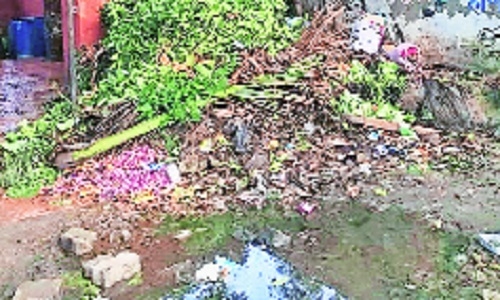Mosquito population hits highest level in city
| Date :20-Mar-2024 |

By Dheeraj Fartode
Have you noticed more mosquitoes buzzing around your home lately? You’re not alone. The mosquito population in Nagpur has hit its highest level in the past 15 months. In March alone, mosquito density soared to 68.23%, with the majority being Culex mosquitoes at 67.78%, and the rest being Aedes mosquitoes, carriers of diseases like dengue and chikungunya. Culex mosquitoes, also known as common house mosquitoes, belong to a group that can transmit diseases to humans and animals. Meanwhile, Aedes aegypti, the yellow fever mosquito, poses a threat by spreading diseases such as dengue fever, chikungunya, and Zika virus. The combined percentage of both Culex and Aedes mosquitoes now stands at 68.23%, indicating a significant presence of disease-carrying vectors in our surroundings.
The Malaria and Filaria Department of the Nagpur Municipal Corporation (NMC) has been closely monitoring the mosquito density in the city. Records show a gradual increase in Aedes mosquito density from October 2023, reaching a concerning level of 0.45% in March 2024. Similarly, Culex mosquito density has also been on the rise which hit its peak at 67.78% in March 2024.
While Culex mosquitoes may not pose a severe threat to humans, their presence can disrupt sleep during the night. Additionally, the increased use of mosquito repellents, triggered by the surge in mosquito numbers, also pose dangers for health conditions especially for children and aged persons. The surge in mosquito population can be attributed to various factors, including the accumulation of stagnant water in which provides ideal breeding ground for mosquitoes. With the onset of the rainy season, these conditions become more favorable for mosquito breeding. Moreover, water-filled containers like cooler pots and garden dishes also contribute to the proliferation of mosquitoes.
To address this issue, the NMC has launched an intensified anti-mosquito operation across the city. Teams are actively inspecting households and educating residents on preventive measures to curb mosquito breeding. Mosquito larvae have been found in various places like pots, dishes, tires, and scraps, said NMC officials. Gardens and dense bushes around homes have also been identified as potential breeding sites for mosquitoes. It’s alarming to note that mosquitoes require just 5 ml of water for breeding, making even small water collections a significant risk factor. The NMC officials claimed that they are conducting awareness programmes and have urged residents to take proactive measures to eliminate mosquito breeding sites.
Fluctuating Aedes, escalating Culex mosquito densities
In October 2023, the density of Aedes mosquitoes stood at 1.15%, which gradually declined to 0.65% in November 2023 and further plummeted to 0.13% in December 2023. However, in January 2024, the density of Aedes mosquitoes remained stable at 0.13%, only to surge to 0.27% in February 2024. March marked a significant increase, reaching a concerning 0.45%.
According to the data, density of Culex mosquitoes was 59.30% in October 2023, which decreased slightly to 57.52% in November 2023 before surging to 62.29% in December 2023. Over the past 3 months, there has been a rapid escalation in mosquito spread. In January 2024, the Culex density rose to 64.76%, followed by an increase to 66% in February 2024, and peaking at 67.78% in March 2024.